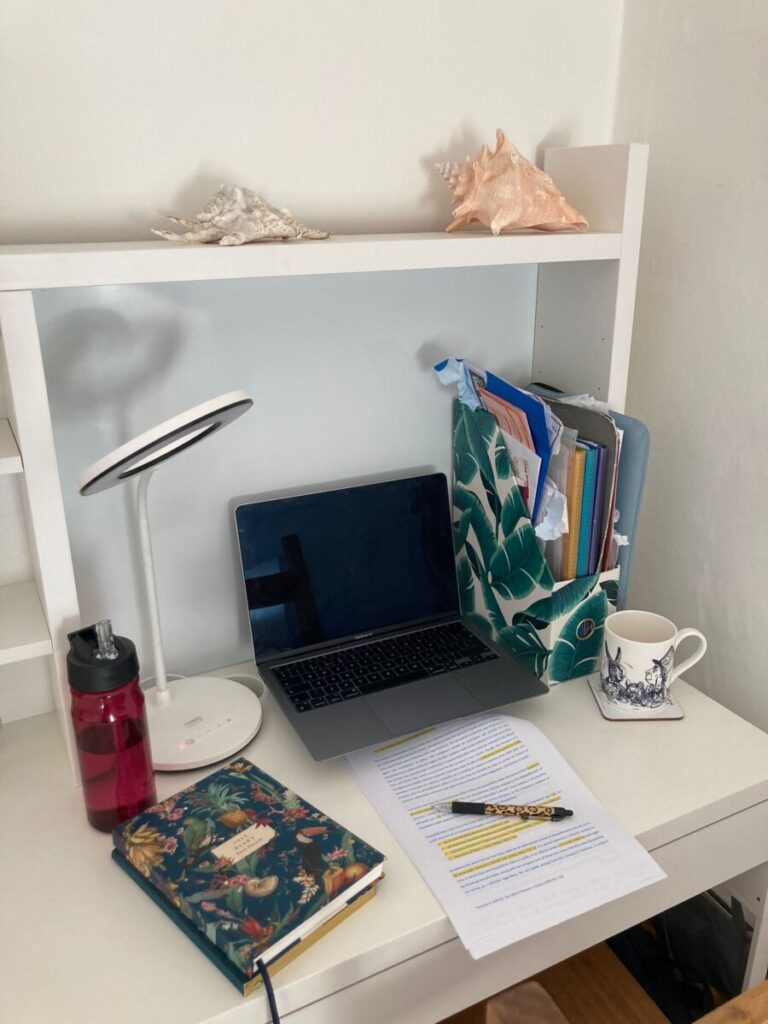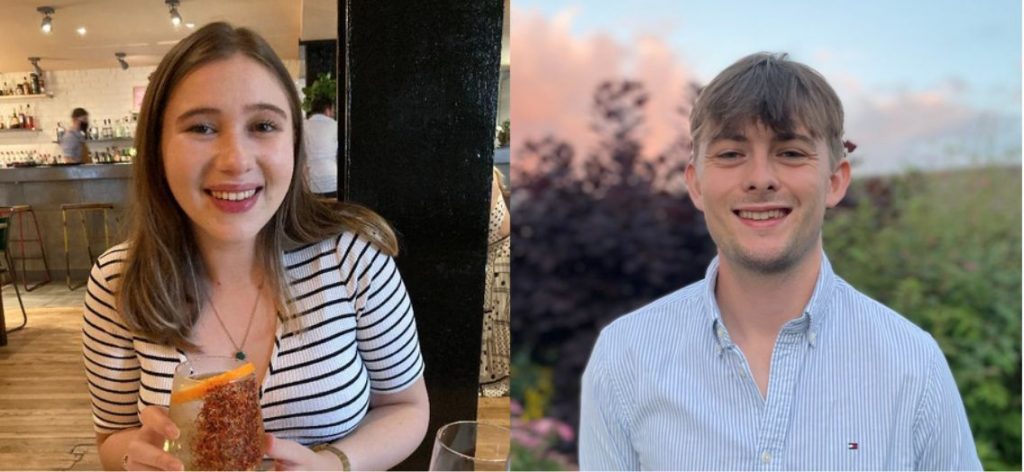This peice was written by Law Clinic alumn, Murray Kemp, after volunteering as a ‘Border Violence Reporter’ for No Name Kitchen from September to November 2021. Murray reports on his time at the Serbian-Croatian border, particularly his time in the town of Šid.
*some graphic images are contained in this piece.
An eyewitness report on the forgotten Afghan men stranded along the Western Balkan Route.
The transient nature of the squats is evident as soon as you arrive. Piles of rubbish are strewn everywhere, mosquitoes and flies taking their pick of the scabies-ravaged skin and discarded refuse on offer. The men wear a mix of traditional Afghan clothes and handouts, swapping the former for the latter when wear sets in. It’s lunchtime in an informal refugee settlement in Serbia, hidden in the forests just a few kilometres from the border with Croatia. Apart from the well-kept tents that the men sleep in, or the matted prayer area facing east towards Mecca, the place is a mess. To clean up would mean admitting defeat, the men accepting that they are going to be staying there longer than the few days they all hope and pray for. Yet many do stay for much longer. One young man, 19-year-old Mirhab*, has just returned from a three-month absence after he was run over by a truck, leaving him in a coma. He receives a hero’s welcome when he returns from hospital, smiles and long sleeves hiding the shredded skin of his arms and legs. He hopes this is just a minor setback, and that he won’t join the number that have seemingly been there forever. Armed police, drones, dogs, every tool in the vast arsenal of the EU border regime stands between them and their goal. The longest staying resident we spoke to had been there for over four years.

In May 2021, after the bloody collapse of the Islamic Republic of Afghanistan, the European Union’s flimsy reassurances of safety evaporated along with their Joint Way Forward deal facilitating the return of refugees. For a select few within the country, crammed aboard evacuation flights from Kabul Airport, this meant salvation. But for those who had already left, halfway to Europe in the human flow of international migration routes, salvation was still a long way off. Despite assurances from European Commissioner for Home Affairs, Ylva Johansson, that Europe had a “moral duty” to help Afghan refugees, the political consensus of ‘Fortress Europe’ remains, keeping them as far from EU borders as possible. With most of Afghanistan’s Central Asian neighbours struggling under their own socioeconomic problems and unwilling to accept the burdens imposed upon them by the EU, this leaves the long journey to Europe by land as the only realistic chance of escape for the millions of Afghans fleeing war and persecution. The myriad of pathways that make up this route are treacherous. One such passage, commonly termed the ‘Western Balkan Route’, consists of the cross-land journey through Greece, Macedonia, Serbia, into the EU border at Croatia, through Slovenia, to the relative safety of Italy or Austria. In the early years of this pathway, crossings were relatively easy. But in 2016, amidst media uproar over the so-called ‘migrant crisis’ and cowed by the rise of far-right populist parties, the widespread closure of borders and the hasty agreement of a €6 billion deal between the EU and Turkey led the then President of the European Council, Donald Tusk, to proclaim that “irregular flows of migrants along the Western Balkan Route have come to an end”. According to the politicians of the West, the Balkan Route was closed. Yet thousands still attempt it to this day, through tougher and less well travelled pathways. One such route leads through a medium-sized town on the Serbia-Croatia border, a town called Šid.
I went to Šid (pronounced Sheed) from September to November 2021 as a volunteer with No Name Kitchen, a horizontally-structured NGO providing aid to displaced people throughout the Balkans. Based out of a living and working space in the centre of town, volunteers come from far and wide to provide daily food, showers, and medical support to the hundreds of people camped in informal settlements in the surrounding area. Though inspiring and powerful, this sense of international solidarity is met with steely resistance. From the moment of their arrival, volunteers live under the overbearing, ominous presence of the Serbian police force. Tailing them in their van, lying in wait for them at distribution sites, the threat is constant. Although the provision of aid is not illegal, the proximity to the border and a prevailing anti-immigrant sentiment give the dark blue uniformed authorities an effective carte blanche to criminalise actions as they see fit. In the past, volunteers had been prosecuted on falsified charges, expelled from the country, even physically attacked. Intimidation is the order of the day. “We felt that we were doing nothing wrong, but they were treating us like a threat,” Mariona, one of the volunteers, recounted. She was arrested along with two others during my stay while assessing reports of a mass influx of cold, desperate refugees into Majdan, a tiny border town in the agricultural heartlands of northern Serbia. After being detained, frisked, and interrogated by special police units, their IDs and notebooks were inspected and photographed before they were driven out of town and told never to return. “It made me think how the people must feel this way, from the moment they leave their countries and begin their life on the move”.
Parallel with the state, much of the dirty work in Šid is done by a less visible, shadowy network of far-right organisations. Fascist paramilitary units from the ultra-nationalist Chetnik movement guard the areas surrounding official camps, stopping people from leaving and preventing access for aid organisations. A group called Omladina Šida (Youth in Šid) posts online statements and holds regular flag-waving protests against the town’s refugee population. One statement on Facebook warned that “neither migrants nor volunteers should be able to walk the streets”, and that locals should call the police if they saw them. Another, issued after the arrival of eight busloads of people to the official camps in Šid following evictions in northern Serbia, warned that people would have “nothing better to do than expel migrants from their homes and gardens” and that they could “resist or not exist”. An atmosphere of fear surrounds the town. Nationalist graffiti is common, swastikas and skulls spray-painted on crumbling walls alongside traditional Serbian crosses. Refugees seldom enter alone, preferring the safety in numbers afforded by travelling in groups.

As well as general duties preparing for distributions, my role within No Name Kitchen was a Border Violence Reporter. As part of the wider Border Violence Monitoring Network, I conducted interviews, took photographs, and compiled reports on incidents of police violence. There was a lot to cover. Each night, hundreds try ‘the game’ – a deceptively cheerful codeword created by refugees for the often-harrowing border crossing attempts. Those who play are known as ‘passengers’, and whether by sneaking into trucks, taxis, trains, or walking if they have no money to pay smugglers, the game presents their only road to safety and freedom. But the idyllic planes and forests around Šid hold hidden brutality. The flat ground and open fields make it easy to spot groups of passengers walking around. Police and the paramilitaries work in tandem, patrolling the lands in search of their prey. In forests and fields far from town they launch their attacks. Tents are slashed, belongings destroyed, batons reign down on defenceless bodies. Smoke regularly fills the air where informal encampments have been doused with petrol and set alight. Guns are pointed in faces, bullets shot through water tanks and into the air. Dogs tear chunks out of malnourished limbs. On the other side of the border, the threat continues far into the EU. Croatian special police forces patrol deep into the interior, picking up passengers and dumping them illegally back over the border into Serbia in what are known as push-backs. After every attack, once the men had returned we did our best to help pick up the pieces, dressing wounds, taking reports, and replacing belongings that had been destroyed. The stories all painted a similar, chilling picture, differing only in the levels of brutality exercised in them. “They beat you. They smash your phones. They take your money, your clothes, your bags,” 22-year-old Javad told us. “They leave you to freeze. They punish you in different ways”.
Far from the relative comfort of the town’s three government-run camps, which although cramped and underfunded, provide a roof, healthcare and three daily meals to anyone willing to register and help out with cleaning duties, the best chance at the game means a move to the informal settlements. Here, passengers sleep in tents or abandoned buildings just a few hundred metres from the border. The network of migration channels funnel people by their nationality, depending on personal connections and the ethnicity of those in charge. In Šid, this meant mainly Afghans. Men are usually sent ahead, braving the dangerous journey alone in the hope of reaching their destination and applying for reunion visas for their family. The journey isn’t safe for lone women. Only one was ever witnessed by the volunteers I met, and her brief stay soon became the stuff of legend. The atmosphere when we arrived at the squats each day was one of welcoming and happiness. But the horrors of home were never too far from conversation. Messy war wounds and infected cuts interspersed with neat rows of knife wounds, self-harm scars betraying an alternate reality. Mention of the wars brought a solemn mood. One young man, 19-year-old Mohammed, lost a brother in the Kabul Airport terror attack when we were there. He took a knife to his arm afterwards, sticking it so deep that it broke through each layer of skin. When we dressed the wound the day after he laughed it off, mimicking stabbing himself. He shrugged in resignation, as if to say, this is just the normal way of things. Throughout my stay Mohammed slowly deteriorated, each failed border attempt, each push-back, and each beating drawing him further and further inside himself.

For the other tough yet damaged men of the squats, the scars of the past were worn inside. Stuck in a pressure cooker with border police creeping in from every side, the memories of home take on new dimensions of trauma. One young man, Abdul, was known as the greatest dancer in the squats. Always smiling, on his own or with a willing partner he would dance for hours, spinning and twisting beautifully to the sound of Pashto music pumping out of a beaten-up old speaker. One day, after knowing him for a while, he beckoned me over to look at his phone. Flicking through light-hearted TikToks – a common replacement for conversation to account for language difficulties – he paused on one. Different from the others, it showed bodies wrapped in sheets being loaded into a 4×4 in the dusty desert of Afghanistan. A man walked into the frame, a dazed and distant look on his face. “This is my brother”, Abdul remarked, staring intently at the screen. I noticed something strange about the brother’s arm. Looking closer, I realised it had been severed just below the shoulder. He was holding it, drenched in blood, in a cross-armed position. Abdul looked on in silence. After this there was no more dancing for the day, and he retreated into the bushes, no longer smiling. One of his friends told us, “for one hour each day, he is happy. The rest, like this.”
Good news in Šid came in rare but big doses. After countless attempts, the lucky and determined amongst the passengers began to evade capture and make it across the borders. On video calls back to the friends who had yet to make it, their faces showed pure elation, optimism at the chance of a new life that had been their foremost desire for years. Most went to Belgium, Germany, or France. I asked one group if any of them planned to go to the UK. “No”, they laughed in unison, explaining the difficulties of crossing the English Channel. “This border, big problem”. After so long spent locked outside the gates of the EU, the relief after reaching a safe haven and the endpoint of their long, harrowing journey was overpowering. Yet for some, Šid remains their final destination. One evening, stuck in a traffic jam on the way back from Novi Sad, I got the call that one of the men at the squats, 22-year-old Khalid, had been run over by a train. Exhausted and with nowhere comfortable to sleep, he had lain down on the tracks before attempting to sneak into an adjacent line of trucks heading out of town. After receiving a message of distress from his friends, some of the other volunteers went along to assist. They found the Serbian police lying in wait along the road leading to the tracks, more concerned with catching the others than helping. The officers demanded that they go first. When they found Khalid, moved to the side of the tracks and covered with a blood-soaked jacket, he was no longer breathing. “This migrant is kaput,” the officers said, kicking his lifeless body like a discarded plastic bag. Facing hostility up until his final breaths, he joins the countless number of displaced people who have died before reaching their promised destinations. Khalid had survived the war zones of Afghanistan, but he couldn’t survive Šid.

Šid is far from an anomaly. The small snapshot outlined above, although bleak, presents a familiar story played out daily in the thousands of other border focal points spread across the world. A few weeks after I returned home to Glasgow, I saw on the news that thirty people had died in one attempt at crossing the English Channel, just kilometres from British Soil. Far from the unfamiliar expanses of the Balkans, these deaths are occurring right in the heartlands of wealthy Europe. The international border regime, designed to keep people in their place and profits on the move, is massacring people right on our doorstep. The blame may be heaped on smugglers, but they are merely a symptom of the wider rot that has spread across the world, a rot slowly eroding our humanity with the creeping rise of the far right, the militarisation of borders, and the criminalisation of humanitarian aid. In the name of the UK, the EU, and other hallowed institutions that so many liberals and leftists defend, these ramparts show the hard face of the relative comfort which they enclose. After being bitten by a police dog and unable to walk, one young man, an Afghan army soldier who had fled after being abandoned by coalition forces, voiced to me his anguish at the harshness of it all. “I want to go to Europe. I want to study. I want to sing”. For other Afghans like him, other Syrians, and the many other victims of war, climate change, and economic ruin who are spread across the world, journeys along routes such as the one through Šid show no sign of ending anytime soon. The people I met there are amongst the most inspiring I have ever met, far stronger and more resourceful than any right-wing politician, CEO, or business leader spouting the supposed benefits of anti-immigrant politics. Despite the vast defences encircling it, despite the states united against them, Europe still offers a safe haven for them and their families. But first, they have to get there.
*Names have been changed to protect identities.
By Murray Kemp, Law Clinic Alumn and Volunteer ‘Violence Border Reporter’ for No Name Kitchen








